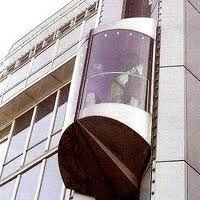

CONTENTS - MENU
EN81 - Legal Requirements and Implications
BS EN81 parts 1 and 2, as with other British and European Standards, have no specific legal authority and compliance is no guarantee of immunity from legal obligations.
However they are inextricably linked to The Lifts Regulations 1997 which in effect makes putting a lift into service, unless full compliance is guaranteed, an issue which may result in prosecution.
The new standards apply to new lifts. The instance of a new lift in a new building with a new lift shaft is simple enough. But what of new lifts in existing lift shafts? As for The Regulations, these too are considered to require full conformity of the Regulations and therefore EN81.
It is with the matter of refurbished or modernised lifts where the clarity fades. The problem lies in the fact that a clear definition as to what constitutes a 'new' lift has not been determined and, at the time of writing, still no concise European definition exists.
According to the Health and Safety Executive the Regulations, and therefore EN81, will apply to any refurbishment that results in a change to the original Health and Safety characteristics. This is clearly open to misinterpretation and error even within the lift industry itself. It is entirely possible that the replacement of a control system or drive unit in certain circumstances may in itself be sufficient for the Regulations to come into force.
The Lift and Escalator Industry Association, L.E.I.A., issued a letter dated 11th June 1999, which recommends that the retention of guides along with other minor parts will not be sufficient to prevent the Regulations from being applicable. This similarly widens the scope of application of EN81.
In all cases therefore the advice has to be to assume that full compliance is necessary except for the most simple like for like replacement of parts or components which do not have a bearing upon the performance or health and safety characteristics of the installation.
After all, the apparent aim of all these documents and standards is to improve health and safety conditions and as such they should be embraced where possible and not regarded as a matter to be avoided at all costs.
